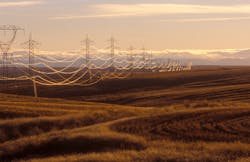NERC Releases Report on Risks to the Power Grid
Changes to the reliability ecosystem — driven by a shift in the resource mix, the retirement of gas, coal and nuclear plants in concert with the introduction of renewable energy resources and the advent of new technology — have required NERC to adapt, implementing a risk-based approach toward significant threats to the reliability of the North American grid.
In its role as the Electric Reliability Organization, NERC identifies and quantifies current and emerging reliability issues that enable the ERO to provide risk-informed recommendations for industry to pursue improved reliability performance. The State of Reliability 2018 report looks back over the previous year, analyzing historical risks to the bulk power system with a view toward solving future problems.
“NERC's annual State of Reliability report is an analysis of the past performance of the grid that informs regulators, policymakers and executives at a high level while providing granular technical details for those interested in the underlying data and detailed analytics,” said James Merlo, vice president and director of Reliability Risk Management at NERC. “The grid has several areas that continue to show year-over-year improvement, and we continue to see the sustainment of high performance across all of the key reliability indicators.”
As dependence on the electric infrastructure increases daily, resilience becomes a more critical element of bulk power system reliability. In 2017, the bulk power system was able maintain reliable operations during two Category 5 events — hurricanes Harvey and Irma — and the areas affected from storm-related damage recovered in record time, demonstrating improved resilience of North American bulk power system.
NERC also identified a previously unknown risk to reliability that brought inverter-based resource controls, protection and performance to the forefront of NERC’s reliability efforts. NERC is working with a team of industry inverter experts to mitigate some of the discovered issues and to identify and mitigate any other inverter reliability issues.
Other key findings include:
- The bulk power system experienced no loss-of-load due to cyber or physical security events despite continually evolving threats. Nonetheless, grid security, particularly cyber security, is an area where NERC and the industry must continually improve defenses as threats continue to rapidly evolve.
- Transmission outages caused by failed protection system equipment, ac substation equipment or human error all show a decreasing trend for the last five years. These three areas have historically been major causes of transmission outages. Each has trended downward for the last five years; however, these areas remain major contributors to transmission outage severity and will remain areas of focus.
- Frequency response performance trends, while remaining acceptable, are showing varied results by interconnection. Individual Interconnection performance is separated into performance during the arresting period and during the stabilizing period. Three of the four Interconnections trended “improving” during the arresting period, and two of the four trended “improving” during the stabilizing period. No Interconnection experienced frequency response performance below its interconnection frequency response obligation.
- Protection systems misoperation rates, while remaining high priority, have declined for the fifth consecutive year. The overall NERC misoperation rate is lower in 2017 than 2016 (7.1 percent down from 8.3 percent), continuing a five-year trend of declining rates across North America. The three largest causes of misoperations in 2017 remained the same as in 2016: Incorrect Settings/Logic/Design Errors, Relay Failure/Malfunctions and Communication Failures.
In addition to identifying reliability risks, NERC noted key areas for improvement, including resilience, inverter-based resource performance, security and transmission outages from failures and misoperations. The risks presented in the State of Reliability 2018 report must be monitored and mitigated to preserve grid reliability. The report provides a basis for understanding and prioritizing these risks and, more importantly, how these interdependent challenges require ERO-wide coordination for effective mitigation.
The full NERC report is available at this link.
